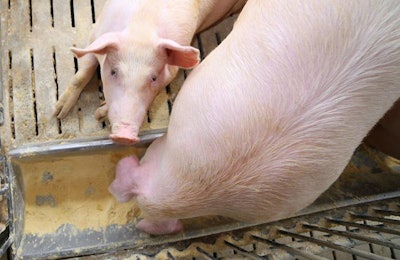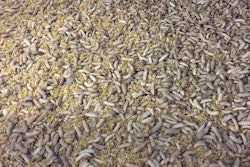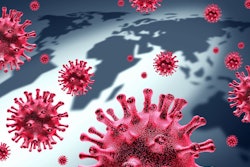
Corn-based diet low in amino acids can buy producers up to four weeks of time to market
Researchers at Kansas State University have studied various diets aimed at slowing pig growth and found that limiting amino acid intake is successful at extending time to market.
“In this short-term period before market, we’re able to buy about three and a half to four weeks of extra time that we could market those pigs over,” said Kansas State University researcher Mike Tokach.
That time is crucial during the novel coronavirus (COVID-19) pandemic, when meat processing and packing plants have been closed or slowed, causing limited capacity and resulting in a backup of pigs on farms.
That extra time “allowed our producers to keep those pigs on the farm longer without them getting too heavy and still fit into a packer window in terms of the right weight ranges,” Tokach said.
He and his Kansas State University colleague Joel DeRouchey said their findings will be helpful for hog producers to implement now and any time in the future when there are supply chain issues; packing plant capacity is expected to be very tight this fall, they said.
“If we need to use a strategy like this in the future … we have a very good idea now how we can prescribe the levels of performance that we may want to achieve,” Tokach said.
Feeding methods tested
Researchers tested four diets to compare the effect of reduced lysine on pigs’ growth:
- A diet with normal amounts of lysine for the entire late finishing period.
- A “slow” diet with normal amounts of lysine until the final two weeks of feeding, then a corn-based diet that included only vitamins and minerals.
- A “slow’” diet with reduced amounts (25%) of lysine the entire late finishing period.
- A “slow” diet with reduced lysine (25%) until the final two weeks of feeding, then a corn-based diet that included only vitamins and minerals.
They started the study when pigs were 200 pounds, targeting the last 70-80 pounds of growth to market weight.
“Ultimately, what we found through this research is when the pigs are on a slow diet, we reduced their growth performance fairly substantially,” DeRouchey said. “In fact, they were about 15 pounds, 16 pounds lighter at the end of that finishing period of about 42 days by just feeding reduced amino acids. Interestingly, when we put them on a slow diet then moved them to a corn-based diet, they gave up another 10 pounds, or were about 26 pounds lighter after only a 42-day feeding period, which is very substantial. And in fact, those diets achieved the goal of holding those pigs while they’re still consuming a full access of feed.”
Good for animal welfare, poor for feed efficiency
Other options like heavy stocking density or restricting feeder access will also slow pig growth but are not as good for the welfare of the pig.
“If we limit the intake of (amino acids), the animal simply isn’t able to grow as fast, and that was our goal – to slow down the growth while they’re still consuming a full amount of feed from their feeders where we don’t have restricted access,” DeRouchey said.
The researchers acknowledged that this feeding method results in poor feed efficiency, but that’s a tradeoff to slowing the pigs’ growth.
“It’s always a concern in that you want to feed those pigs as cheaply as possible, but when you’re in a situation where you can’t take those pigs to market but they’re already getting close to market weight, what your goal is, is to minimize the cost of keeping those pigs around another day,” Tokach said. “So, even though feed efficiency is poor, the cost of that diet is so much lower when we don’t have the protein included.”
View our continuing coverage of the novel coronavirus (COVID-19) pandemic.











